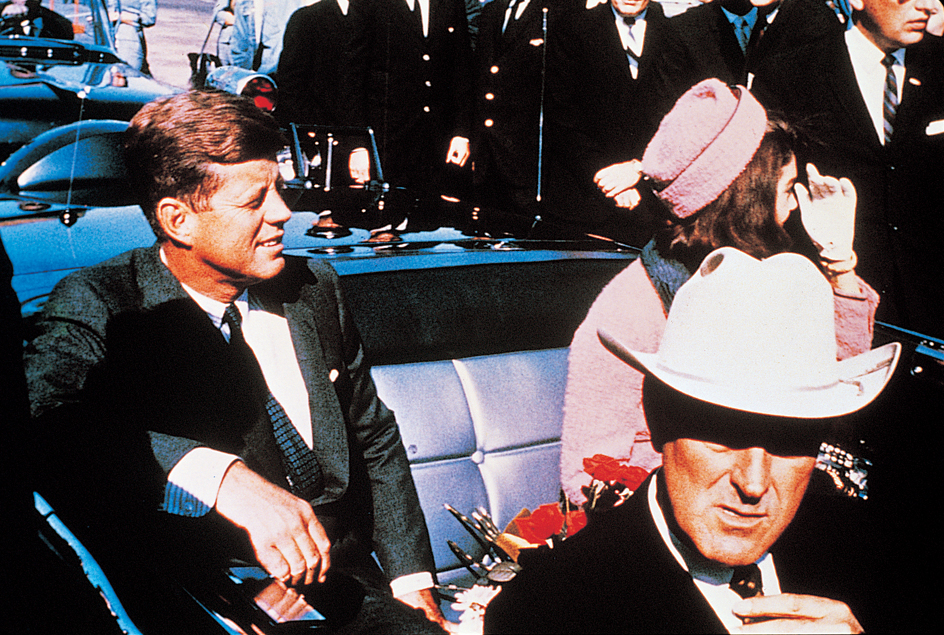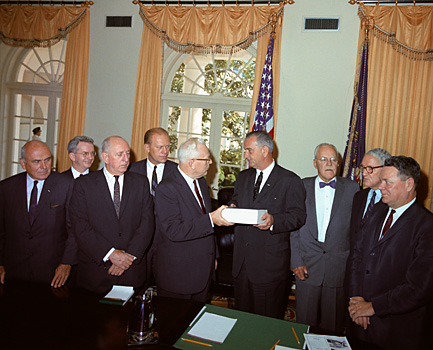John F. Kennedy assassination was the fatal shooting of United States President John F. Kennedy in Dallas, Texas, in November 1963. Kennedy’s death plunged the nation into mourning. The accused assassin, Lee Harvey Oswald, was arrested for the killing and was shot to death while in police custody. Government investigators would later reveal that they suspected Kennedy’s murder was part of an assassination plot, but no conspiracy was ever proved.

The killing.
On Nov. 21, 1963, Kennedy—accompanied by his wife, Jacqueline Kennedy; Vice President Lyndon B. Johnson; and Johnson’s wife, Lady Bird—flew from Washington, D.C., to Texas. They visited San Antonio, Houston, and Fort Worth. At 11:37 a.m. on Friday, November 22, the president’s plane arrived in Dallas after a short trip from Fort Worth.
The presidential motorcade was to travel through the streets of Dallas to the Dallas Trade Mart. Kennedy was scheduled to speak there at a luncheon. Dallas newspapers had reported the motorcade’s planned route. After leaving the plane, Kennedy rode in the rear seat on the right side of the open limousine. His wife sat on his left. Texas Governor John B. Connally sat in a “jump” seat in front of the president, and Nellie Connally sat to her husband’s left. A limousine filled with Secret Service agents trailed the president’s car. Vice President and Mrs. Johnson rode in the third car, also accompanied by Secret Service agents.
At 12:30 p.m., the presidential motorcade was traveling through Dealey Plaza as it approached an expressway for the last leg of the trip. Three shots rang out. The president slumped down, hit in the neck and head. Connally received wounds in the back, chest, thigh, and wrist. Mrs. Kennedy held her stricken husband’s head in her lap as the limousine raced to nearby Parkland Hospital.
Doctors attempted to save the president, but he died at 1 p.m. without regaining consciousness. Doctors said that Kennedy had no chance to survive when brought to the hospital. Governor Connally later recovered.
Presidential succession.
Just over two hours after Kennedy had been shot, Vice President Lyndon B. Johnson took the oath of office aboard the presidential airplane on the taxiway of Dallas’s Love Field. The plane carrying the new president and his wife, the body of the dead president, and the late president’s widow returned to Washington.
Accused assassin.
Witnesses said the shots that killed the president came from a sixth-floor window of the Texas School Book Depository, a building along the route of the motorcade. Police began searching for a depository employee who had left the scene a few minutes after the shooting. J. D. Tippit, a Dallas policeman, stopped Oswald for questioning at about 1:15 p.m. According to police reports, Oswald shot and killed Tippit while resisting arrest.
Oswald was finally arrested in a theater half an hour later. He was charged with the murders of President Kennedy and Tippit. Investigators soon assembled details of Oswald’s life. He had been discharged from the U.S. Marines following court-martial proceedings. He later lived in the Soviet Union and attempted to become a Soviet citizen. Oswald had a Soviet wife, and he was an admitted Marxist. He also had been active in the Fair Play for Cuba Committee, a group that supported Cuba’s Communist dictator Fidel Castro. Acquaintances stated that he seemed to have no friends and only strained relationships with family members. At the time of Kennedy’s death, Oswald was a newly hired employee of the Texas School Book Depository.
The police questioned Oswald for two days, but he denied both murders. Dallas police claimed that the evidence against Oswald was overwhelming. The murder weapon, an Italian rifle with a telescopic sight, was found hidden in the School Book Depository. The rifle had been purchased by Oswald from a mail-order firm. And Oswald’s palm prints were found on the weapon.
On Sunday, November 24, two days after the assassination, Oswald was scheduled to be taken from the Dallas city jail to the county jail. As he was being led to an armored car for the trip, a Dallas nightclub owner, Jack Ruby (or Rubinstein), stepped out of the crowd and shot Oswald to death. A nationwide television audience witnessed the shooting. Oswald was taken to the same hospital where the president died. He died at 1:07 p.m., 48 hours after Kennedy’s death.
Jack Ruby was convicted of Oswald’s murder in 1964, but the conviction was overturned in 1966. A Texas appeals court ruled that Ruby had not received a fair trial and that he should be retried in a different location. Ruby died in 1967, while awaiting the new trial.
Memorial services.
On Saturday, November 23, Kennedy’s body lay in the East Room of the White House. On Sunday, Kennedy’s body lay in state in the Rotunda of the United States Capitol. Over the course of 18 hours, nearly 250,000 people came to pay their respects to the fallen president. The wake was broadcast in its entirety on national television.
On Monday, November 25, Kennedy was buried with full military honors at Arlington National Cemetery across the Potomac River from Washington, D.C. At the close of the funeral service, the late president’s wife lighted an “eternal flame” to burn over the president’s grave.
Further investigations.
A presidential commission headed by Supreme Court Chief Justice Earl Warren investigated the case. After a 10-month investigation, the commission reported in September 1964, that Oswald, acting alone, had killed Kennedy and Tippit. However, a congressional committee later reexamined the evidence. In 1979, the committee concluded that Kennedy “was probably assassinated as a result of a conspiracy.”

The President John F. Kennedy Assassination Records Collection Act of 1992 mandated that all materials relevant to the assassination be collected by the National Archives and Records Administration. In 2017 and 2018, the National Archives released thousands of documents related to the Kennedy assassination. Thousands of documents were kept fully or partially sealed for further review, however. Some withheld documents or passages include such information as tax returns or Social Security numbers. In other cases, officials from the Federal Bureau of Investigation (FBI) and Central Intelligence Agency (CIA) suggested at the time that the release of information could have national security implications.
